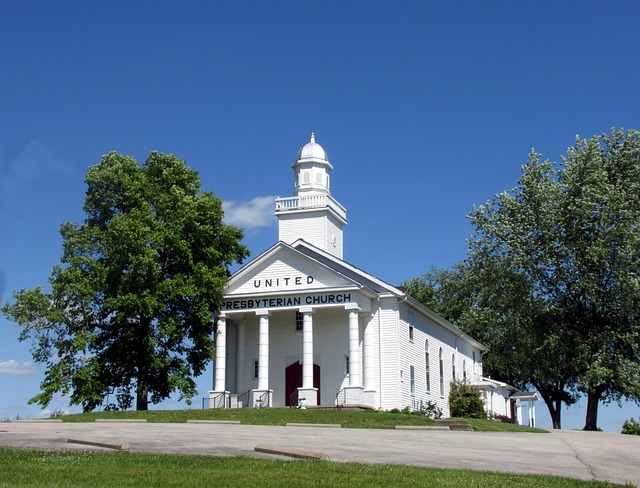Presbyterians baptize through the administration of water, typically by sprinkling or pouring, as a sacrament of initiation into the Christian faith.
Table of Contents
The Significance of Baptism in Presbyterian Theology
Baptism holds a significant place in the theology of the Presbyterian Church. It is a sacred ritual that symbolizes the initiation into the Christian faith and the covenant relationship between God and the individual. In this article, we will explore the significance of baptism in Presbyterian theology and how they perform this sacrament.
Presbyterians believe that baptism is a visible sign of God’s grace and a means of spiritual rebirth. It is a powerful symbol of the washing away of sins and the new life that comes through faith in Jesus Christ. Baptism is seen as a sacrament, a sacred act instituted by Christ himself, and it is considered essential for salvation.
The mode of baptism practiced by Presbyterians is typically by sprinkling or pouring water on the head of the individual being baptized. This method is chosen because it symbolizes the cleansing and purifying work of the Holy Spirit. It is not the amount of water used that matters but the spiritual significance behind the act.
Before a person is baptized, they are required to make a public profession of faith. This means that they openly declare their belief in Jesus Christ as their Lord and Savior. This profession of faith is an important step in the baptismal process as it signifies a personal commitment to follow Christ and live according to His teachings.
In Presbyterian theology, infant baptism is also practiced. This is based on the belief that children are included in God’s covenant with His people. Just as circumcision was a sign of the covenant in the Old Testament, infant baptism is seen as a sign of the covenant in the New Testament. It is a way of dedicating the child to God and praying for His grace to be upon them as they grow.
The baptism of infants is not seen as a guarantee of salvation but rather as a promise of God’s faithfulness and a call to nurture the child in the Christian faith. As the child grows, they are encouraged to make their own profession of faith and confirm the promises made on their behalf at baptism. This is typically done through a process called confirmation.
Presbyterians also believe in the unity of the Church and the importance of baptism as a unifying act. Baptism is seen as a way of joining the universal body of Christ, regardless of denominational differences. It is a symbol of the common faith shared by all believers and a reminder of our call to love and serve one another.
In conclusion, baptism holds great significance in Presbyterian theology. It is a visible sign of God’s grace, a means of spiritual rebirth, and a symbol of the covenant relationship between God and the individual. Whether performed through sprinkling or pouring, baptism is a powerful act that signifies the washing away of sins and the new life found in Christ. Whether it is the baptism of adults or infants, it is a call to faith and a commitment to follow Christ. Baptism unites believers in the universal body of Christ and reminds us of our call to love and serve one another.
Understanding the Mode of Baptism in Presbyterian Practice

Have you ever wondered how Presbyterians baptize? Well, you’re in luck! In this article, we will explore the mode of baptism in Presbyterian practice. So, grab a cup of coffee and let’s dive in!
Firstly, it’s important to understand that Presbyterians believe in the sacrament of baptism. They view it as a visible sign of God’s grace and a means of entering into the covenant community of faith. Baptism is seen as a symbol of initiation into the Christian faith and a public declaration of one’s commitment to follow Jesus.
Now, let’s talk about the mode of baptism. In Presbyterian practice, there are three common modes: sprinkling, pouring, and immersion. Each mode has its own significance and is chosen based on the individual’s preference or the tradition of the particular Presbyterian church.
Sprinkling, also known as affusion, is the most common mode of baptism in Presbyterian churches. It involves the minister or an elder sprinkling water on the person’s forehead. This mode symbolizes the cleansing and purifying work of the Holy Spirit. It is often seen as a gentle and inclusive way of baptizing, as it can be done with people of all ages, including infants.
Pouring, also known as aspersion, is another mode of baptism used by Presbyterians. In this mode, water is poured over the person’s head using a baptismal font or a special vessel. Pouring is often seen as a more intentional and deliberate act, symbolizing the pouring out of God’s grace upon the individual. Like sprinkling, pouring can be done with people of all ages.
Lastly, we have immersion, which is the least common mode of baptism in Presbyterian practice. Immersion involves the person being fully immersed in water, symbolizing their identification with the death, burial, and resurrection of Jesus Christ. This mode is often chosen by individuals who desire a more immersive and symbolic experience of baptism. However, it is important to note that not all Presbyterian churches have the facilities or resources to practice immersion.
It’s worth mentioning that the mode of baptism is not the most important aspect for Presbyterians. What truly matters is the meaning and significance behind the act. Baptism is seen as a sacrament of grace, regardless of the mode chosen. It is a visible sign of God’s love and acceptance, and a reminder of our commitment to live as followers of Jesus.
In conclusion, Presbyterians baptize using three common modes: sprinkling, pouring, and immersion. Each mode carries its own symbolism and significance, but what truly matters is the meaning behind the act. Baptism is a sacrament of grace and a public declaration of one’s commitment to follow Jesus. So, whether you prefer to be sprinkled, poured upon, or fully immersed, the mode of baptism is a personal choice that reflects your faith journey.
Historical Perspectives on Presbyterian Baptism
Presbyterian baptism has a rich historical background that dates back to the early days of the Christian church. Understanding the historical perspectives on Presbyterian baptism can shed light on how this sacrament is practiced today.
In the early centuries of Christianity, baptism was primarily performed through immersion. This practice symbolized the washing away of sins and the believer’s identification with the death and resurrection of Jesus Christ. However, as the church grew and spread, practical considerations led to the development of alternative methods of baptism.
During the Middle Ages, the Catholic Church began to allow for the sprinkling or pouring of water as valid forms of baptism. This change was partly due to the difficulty of immersing individuals in regions with limited access to large bodies of water. The Catholic Church also emphasized the spiritual significance of baptism rather than the physical act itself.
The Protestant Reformation in the 16th century brought about significant changes in the practice of baptism. Reformers like John Calvin, who played a crucial role in shaping Presbyterian theology, emphasized the importance of Scripture as the ultimate authority in matters of faith and practice. This led to a reevaluation of baptism and a return to the early Christian practice of immersion.
Calvin believed that baptism should be administered to believers who made a conscious decision to follow Christ. This belief, known as “believer’s baptism,” rejected the Catholic practice of baptizing infants. Instead, Calvin argued that baptism should be a public declaration of faith and a means of grace for those who had already professed their belief in Jesus.
The Westminster Confession of Faith, a foundational document for Presbyterianism, further solidified the practice of believer’s baptism. It states that baptism is to be administered to those who “do actually profess repentance towards God, faith in, and obedience to, our Lord Jesus Christ.”
However, it is important to note that not all Presbyterians adhere strictly to believer’s baptism. Some Presbyterian denominations, such as the Presbyterian Church (USA), also practice infant baptism. This practice is based on the belief that baptism is a sign of God’s covenant with His people and that infants can be included in this covenant community.
Regardless of the age at which baptism is administered, Presbyterians view it as a sacrament that signifies God’s grace and the believer’s union with Christ. The mode of baptism, whether by immersion, sprinkling, or pouring, is seen as secondary to the spiritual significance of the sacrament.
In conclusion, the historical perspectives on Presbyterian baptism reveal a diversity of practices within the Presbyterian tradition. While some Presbyterians adhere strictly to believer’s baptism, others also practice infant baptism. Regardless of the mode or age at which baptism is administered, Presbyterians view it as a sacrament that signifies God’s grace and the believer’s union with Christ.
Exploring the Sacramental Nature of Baptism in Presbyterian Worship
How do Presbyterians baptise? This is a question that many people may have, especially if they are unfamiliar with the practices of the Presbyterian Church. In this article, we will explore the sacramental nature of baptism in Presbyterian worship and shed some light on how this important rite is performed.
Baptism is a significant event in the life of a Christian, as it symbolizes the washing away of sin and the initiation into the community of believers. In the Presbyterian tradition, baptism is considered a sacrament, which means it is a visible sign of God’s grace and a means of receiving that grace. It is a sacred act that holds deep spiritual meaning for both the individual being baptized and the congregation as a whole.
In Presbyterian worship, baptism is typically performed by a minister or an elder of the church. The sacrament is usually administered during a worship service, where the entire congregation can witness and participate in the event. This communal aspect of baptism is important in the Presbyterian tradition, as it emphasizes the unity and support of the faith community.
Before the actual baptism takes place, there is often a time of preparation and reflection. The person being baptized, or their parents in the case of infant baptism, may meet with the minister to discuss the significance of the sacrament and to ensure that they understand its meaning. This preparation helps to deepen the individual’s understanding of their commitment to Christ and their participation in the life of the church.
During the baptism itself, water is used as a visible sign of God’s cleansing and renewing grace. The minister or elder will typically pour or sprinkle water on the person’s head, while pronouncing the words of baptism. These words may vary slightly depending on the specific Presbyterian tradition, but they generally include a statement of the person’s identity as a child of God and a member of the Christian community.
After the baptism, the congregation often participates in a responsive reading or a hymn that reaffirms their commitment to support and nurture the newly baptized individual in their faith journey. This act of communal affirmation is a powerful reminder of the interconnectedness of the body of Christ and the responsibility we have to one another.
In addition to the sacrament of baptism, the Presbyterian Church also recognizes the importance of ongoing spiritual growth and discipleship. This is why many Presbyterian churches offer confirmation classes or other forms of Christian education for those who have been baptized. These classes provide an opportunity for individuals to deepen their understanding of the Christian faith and to explore what it means to live as a follower of Christ.
In conclusion, baptism is a sacrament that holds deep significance in the Presbyterian tradition. It is a visible sign of God’s grace and a means of receiving that grace. Through the use of water and the pronouncement of baptismal words, individuals are initiated into the community of believers and are reminded of their identity as children of God. The communal aspect of baptism is emphasized in Presbyterian worship, as the congregation participates in the event and reaffirms their commitment to support and nurture the newly baptized individual. Baptism is just the beginning of a lifelong journey of faith, and the Presbyterian Church provides opportunities for ongoing spiritual growth and discipleship.
Conclusion
Presbyterians baptize through the sprinkling or pouring of water on the individual’s head, symbolizing purification and initiation into the Christian faith.


